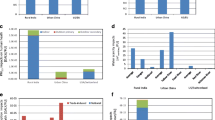Abstract
Goal, Scope and Background
Canadian LCA practitioners currently use European or American methodologies when conducting comprehensive impact assessments, despite the fact that these methods may not be appropriate for Canadian conditions. Due to the lack of suitable models that are currently available, work has been undertaken to develop an LCIA method by adapting existing LCIA models to the Canadian context. This new method allows the characterization of 10 impact categories.
Methods
This project is strongly based on preliminary outcomes from SETAC recommendations for the best available practices in LCIA. Models from 3 recent LCIA site-dependent methods, EDIP2003, IMPACT2002+ and TRACI, were used in this midpoint Canadian-specific method. Characterization models were chosen based on their level of comprehensiveness, scientific sophistication and the possibility of integrating site-specific values in the models.
Results and Discussion
All regional and local impact categories in the method are site-differentiated. For aquatic eutrophication, (eco)toxicity and land-use impact categories, regionally-differentiated models taking into account fate and effect were already available: the parameters of these models were modified for the Canadian context. For acidification, aquatic and terrestrial eutrophication, existing models were spatially differentiated for fate: regionalization of the effect factor was also included, based on the level of sensitivity of each ecozone assessed with vulnerability factors. The default spatial resolution selected for this method was Canadian ecozones, which define spaces in an ecologically meaningful way where organisms and their physical environment evolve as a system. For each ecozone, 2334 site-dependent characterization factors have been calculated.
Conclusion
This LCIA methodology proposes an attractive and useful set of site-dependent characterization factors for the 15 Canadian terrestrial ecozones.
Recommendation and Outlook
Efforts are being carried out to extend the specificity of some factors used in eutrophication modelization. Finally, the transparency of the methodology will allow to re-calculate site-dependent characterization factors for different regions and for additional substances.
Similar content being viewed by others
Author information
Authors and Affiliations
Corresponding author
Rights and permissions
About this article
Cite this article
Toffoletto, L., Bulle, C., Godin, J. et al. LUCAS - A New LCIA Method Used for a Canadian-Specific Context. Int J Life Cycle Assessment 12, 93–102 (2007). https://doi.org/10.1065/lca2005.12.242
Received:
Accepted:
Published:
Issue Date:
DOI: https://doi.org/10.1065/lca2005.12.242




